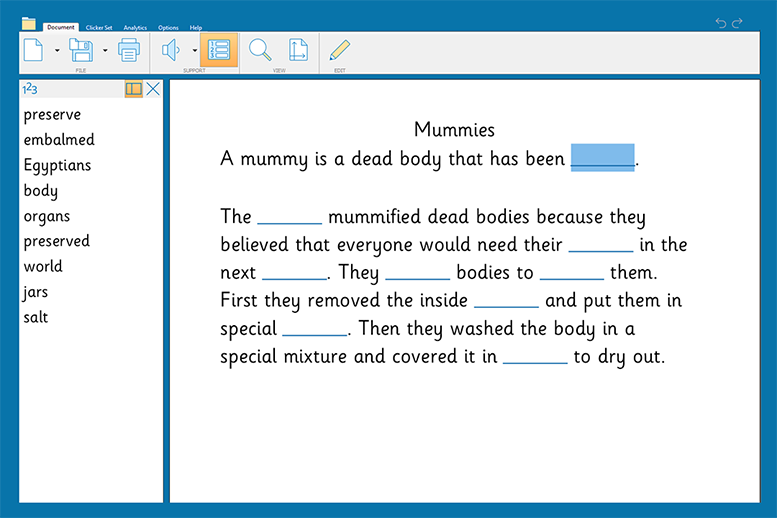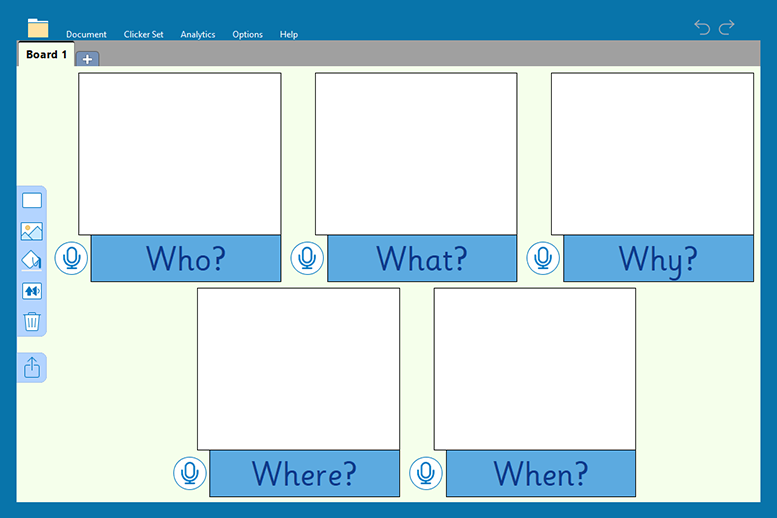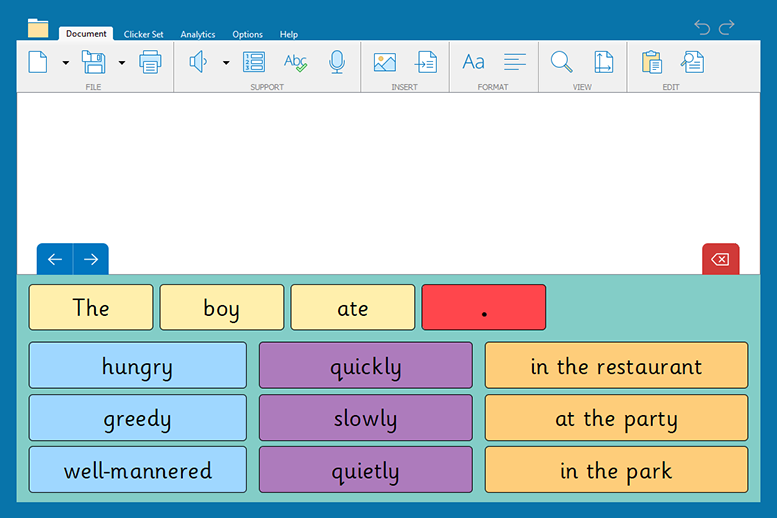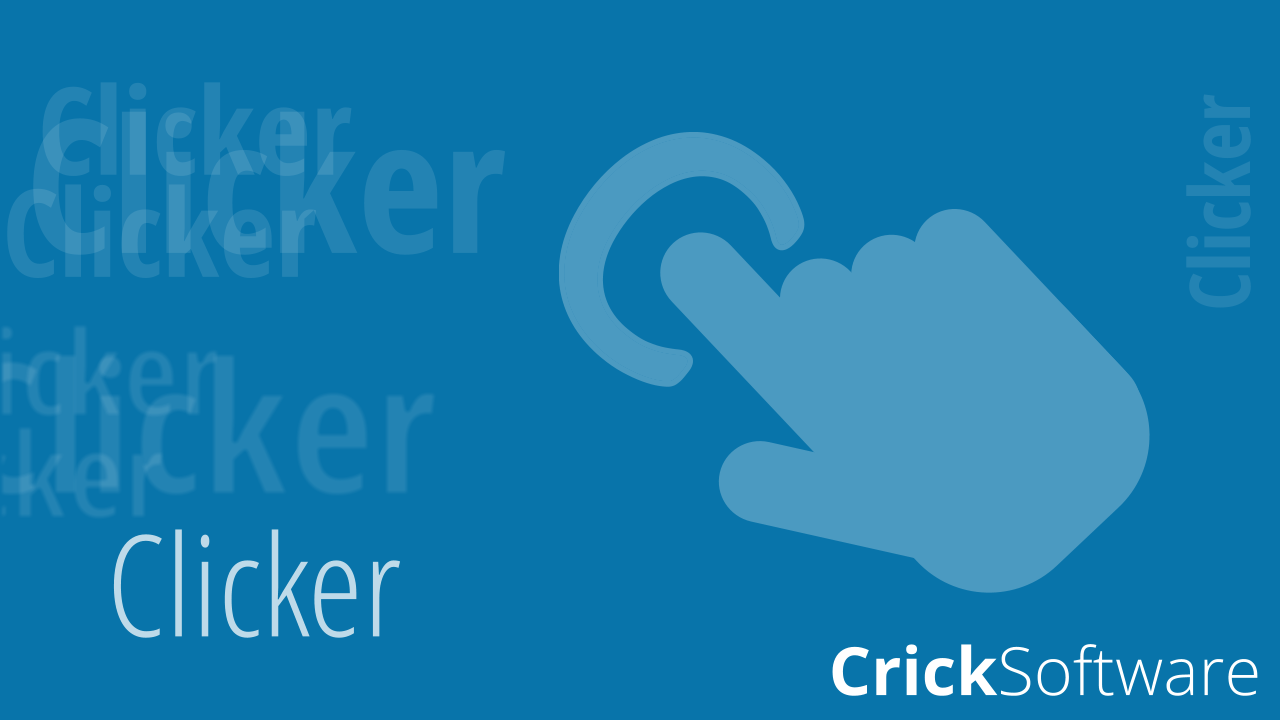I recently read an interesting article that considered the use of worksheets in schools. It’s a contentious issue, especially in the light of environmental concerns. Whatever your views, we thought we would offer up our top 5 alternatives to using worksheets with Clicker.
- Use Cloze activities in Clicker as a great way to assess your pupils’ topic comprehension, reading skills, and ability to use semantic and contextual clues to reconstruct a piece of text. You can paste in any text and create activities in seconds! It’s great for low-stakes testing and informal assessments. And it’s so easy to customise so pupils get the right level of challenge – making this a versatile and targeted activity, rather than simply a ‘one-size-fits-all’ worksheet. Even better, once an activity has been completed, teachers can find out at a glance how pupils have done by viewing the ‘Analytics’ tab.
- Use our Storyboard templates on LearningGrids when children are planning for writing – they can add pictures and/or words to plan out ideas (ranging from simple beginning/middle/ending formats to more complex build-up/problem/resolution formats). The bonus with this on-screen story planner is that children can record ideas too – and for many children who struggle with writing, this is an ideal way of getting started.
- We have a range of Connect Sets for all ages in Clicker and these can be a great worksheet alternative. You might be focusing on particular sentence grammar aspects as in our Expanding Sentences resource. Children can explore different ways of enhancing their sentences and the options offered encourage them to become more adventurous in their use of language. And of course, as with all Clicker Sets, when they send their sentence to the document, they get instant speech feedback, so they can evaluate and re-draft as they go. At the very early stage of simple sentence construction, you can use Clicker’s ‘Guided Order’ facility, so pupils are forced to choose sentence components in a grammatically ordered way. AND, as with all Clicker Sets, pupils can listen to any word or phrase before adding it to their sentence, encouraging them to be independent.
- Matching is a great activity in Clicker, whether it’s matching pictures, words or sounds. What’s more, it’s so easy to change the focus of the activity instantly by simply changing the target or choice! So, for some pupils a straight word-to-picture matching activity is appropriate, but for others, you may want to offer additional support by changing the matching choice to ‘picture and word’. And Matching is not just for younger pupils – you could use it for matching fractions to picture representations in maths, or matching pictures of river features to their names in geography.
- Clicker Board is a great worksheet alternative and can be used in so many ways – for organising ideas, making notes and preparing for writing. In our Setting the Scene resources, children add adjectives to describe a setting – easy enough to do on a worksheet, BUT with Board you can convert the collection of descriptive words into a Word Bank, giving a child instant appropriate support as they move on to the next stage of writing.





So, there we have just a few ideas (from so many I could have chosen) of where I think Clicker would most certainly be a better alternative to the traditional paper-based worksheet. Not just from an environmental and logistical perspective but from an educational perspective too. Clicker goes beyond the worksheet offering and encourages children to become independent, self-reliant, reflective and more confident learners. And that is truly worth its weight in gold!





